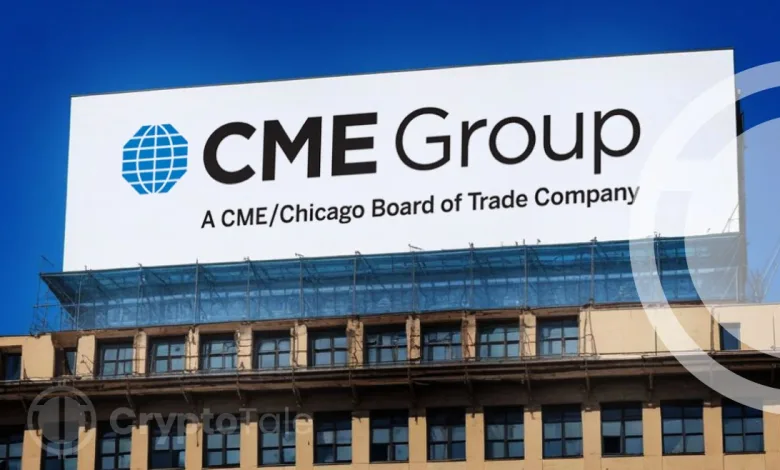All You Need to Know About Chicago Mercantile Exchange

In the world of financial markets, the Chicago Mercantile Exchange (CME) stands as a titan, arranging the trade of derivatives across a vast array of asset classes. From an agricultural trading venue to its current status as one of the world’s largest derivative marketplaces, CME has continually reshaped the landscape of trading and risk management. This article delves into the evolution of CME, explores its diverse range of trading platforms, and examines how it plays a pivotal role in global finance.
What is the Chicago Mercantile Exchange (CME)?
The Chicago Mercantile Exchange, often referred to as Chicago Merc, is one of the most important and influential financial institutions in the world. It is the largest platform for trading derivatives like futures and options across a wide range of asset classes, such as interest rates, equities, foreign exchange, and commodities. CME mostly trades commodities such as energy, agriculture, real estate, metals, cryptocurrencies, and more.
History of CME
CME was founded more than a century ago, in 1898, as the Chicago Butter and Egg Board, where it mainly traded agricultural commodities like wheat and corn. Later, in 1919, the name was changed to CME, and it was only in 1969 that a non-agriculture commodity (silver futures contract) was added to the exchange. After the decision to adopt a free-floating currency system instead of the gold standard, the exchange launched its first futures contracts in 1972.
After the introduction of electronic trading in the 1990s, CME’s growth rate skyrocketed. For a large part of its history, the exchange was a non-profit organization; it was only in 2000 that it was changed to a joint stock company, and it went public in December 2002.
In 2007, CME merged with the Chicago Board of Trade (CBOT) and created the CME group. Later, in 2008, CME acquired both the New York Mercantile Exchange (NYMEX) and the Commodity Exchange, Inc. (COMEX), making the CME group the largest derivative marketplace in the world. Furthermore, in 2012, CME also bought the Kansas City Board of Trade (KCBT).
Derivatives: Futures and Options
CME is well known for its futures and options derivatives.
- Futures Contract: A futures contract is an agreement between two parties who agree to buy or sell an asset at a predetermined price on a specified date. These contracts are commonly used in commodities like gold and oil as well as stock indices or currencies.
- Options Contract: An options contract gives the buyer the right to buy or sell at a specified price before a certain date, and the buyer can decide whether to act on it. They are often used to hedge against possible losses or to speculate on price movements.
What Are The Commodities Traded on CME?
- Agriculture: CME started by trading agricultural commodities and is one of the industry leaders. Futures and options contracts are available for products like corn, cattle, wheat, soybeans, and others.
- Metals: It offers the option to trade precious metals like gold and silver and industrial metals like aluminum and copper.
- Energy: In the energy market, CME includes futures and options for crude oil, natural gas, gasoline, and electricity.
- Currencies: In currencies, futures and options allow investors to trade major global currencies like the Euro, US dollar, Pound, and Japanese Yen.
- Cryptocurrencies: CME introduces futures on cryptocurrencies like Bitcoin and Ethereum after understanding the importance of digital assets.
- Interest Rates: Futures and options offer interest rates on treasury bonds, bills, Eurodollar, and other fixed-income instruments.
CME Trading Platforms
- CME Globex: Launched in 1992, it is the electronic trading platform of CME, offering 24/7 market access. It supports a wide range of products and uses advanced technology to provide fast and reliable trade execution, ensuring minimal latency.
- CME ClearPort: It is a clearing platform that facilitates OTC (over-the-counter) trading of customized derivative contracts. The platform offers robust risk management features and transparency to the OTC markets. Furthermore, it offers flexible clearing services for a wide range of products.
- CME Direct: It is a front-end targeting platform specifically designed for energy and commodity markets. The platform provides powerful tools for trading futures, options, and OTC markets. It also supports multi-asset trading, allowing users to trade various products.
- Elysian: This next-gen trading platform offers a more flexible and customizable user experience. It provides access to advanced market data and analytics, allowing traders to gain insights into market trends.
Risk Management
Risk management is an important part of CME’s value proposition. Its ability to hedge against price fluctuations is a major reason investors use futures and options. Through hedging, sellers can protect themselves from unfavorable price movements in the assets they rely on. This also lets buyers know the price they will pay at the defined time. Here are some examples of how different users use CME’s products for risk management.
- Farmers and Agricultural Producers: Usually, before the crops are harvested, farmers use futures contracts to lock the prices. This method reduces the risk of prices declining before they are ready to sell.
- Energy Companies: Gas and oil companies use future contracts to hedge against volatility, ensuring that the price of the resources at hand will not fluctuate. This method stabilizes energy companies’ revenues and avoids the financial impact of volatile prices.
- Financial Institutions: Banks and investment companies use interest rate futures to avoid or manage possible changes to interest rates. Any change in interest rates will impact their fixed-income portfolios.
- Manufacturers: Companies that use raw materials like iron, aluminum, or others use futures to hedge against increasing costs. For instance, vehicle manufacturers might use aluminum futures to protect against increased metal costs during production.
Conclusion
The Chicago Mercantile Exchange (CME) has evolved into a major power in the financial market, offering a diverse array of derivatives across multiple asset classes. Its history, from humble beginnings as the Chicago Butter and Egg Board to becoming the world’s largest derivatives marketplace, highlights its significant role in shaping modern financial markets. With advanced trading platforms like CME Globex, CME ClearPort, CME Direct, and Elysian, the CME Group continues to innovate, ensuring that traders can access efficient, reliable, and secure markets.




